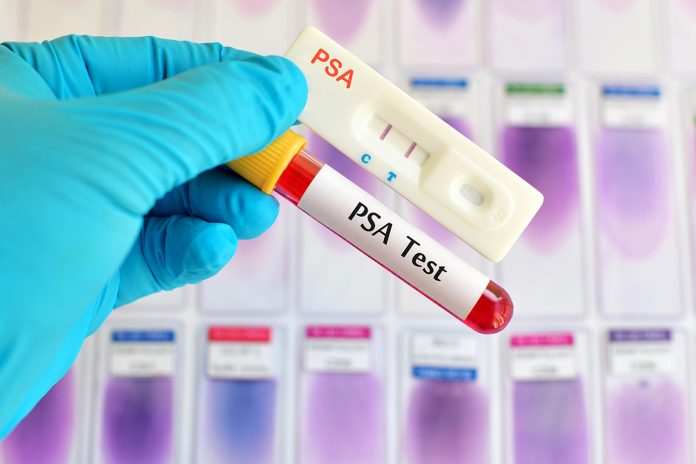Dr Sumith A Kularatne, vice-president of R&D at On Target Laboratories, explores the pros and cons of various existing treatments for prostate cancer
Prostate cancer (PCa) is the second leading cause of cancer-related deaths in men, with about 1.1 million new cases and approximately 307,000 fatalities per year globally. This high mortality rate is partly due to the lack of sensitive methods for the early stage of the disease and absence of better treatments for metastatic tumours. The metastatic disease also significantly impacts the quality of life due to extreme pain, bone erosion, muscle wasting, obstruction of urination and erectile dysfunction. Development of safe diagnostic and therapeutic modalities thus remains a major hurdle in PCa.
Current diagnosis of PCa is accomplished via a digital rectal exam (DRE), prostate-specific antigen (PSA)-blood test, punch biopsy, targeted-biopsy, a transrectal ultrasound (TRUS), magnetic resonance imaging (MRI), computed tomography (CT), and positron emission tomography (PET). Only advanced stages of the disease can be detected by a DRE and the reliability of PSA tests has been questioned due to its elevation during benign prostatic hyperplasia (BPH) and depression whilst taking medication for BPH, or hair loss.
While prostate biopsies can be expensive and painful, they can lead to incorrect diagnosis due to miss-sampling. In fact, it is not uncommon for patients to undergo five sets of prostate biopsies and still to miss signs of PCa. Manual alignment systems, such as the Artemis biopsy tracking system that uses previously taken MRI images in combination with TRUS images, has shown that MRI-guided biopsies increased the accuracy of the diagnosis of PCa. However, this strategy does not provide real-time data.
While CT, MRI, and PET are preferred methods to detect localised PCa, these non-invasive techniques often do not accurately detect or stage lymph nodal metastatic tumours and may not provide real-time information during surgery. Thus sensitive and specific detection methods are needed to assess the primary and metastatic disease.
The range of treatments for prostate cancer
Treatments for prostate cancer range from “watchful waiting” to surgery, radiation therapy, hormonal therapy, chemotherapy, immunotherapy, cryotherapy and/or combination therapy. For optimal surgical resection of the cancerous tissue, it is important for surgeons to locate and remove the primary PCa mass with entirely negative margins with minimal damage to nerves in the prostate, that non-cancerous tissue be left intact, and that all lymph nodes harbouring metastatic cancer cells are removed.
Localised PCa, therefore, is commonly treated with radical prostatectomy either by partial or complete removal of prostate glands using, either open surgery or Da Vinci Robotic Surgery (Intuitive Surgical, Sunnyvale, CA) system. Radiation therapy and hormonal therapy, commonly in combination with surgery, have also been used to treat localised PCa. Consequently, palliative hormonal therapies are often preferred in lieu of above strategies.
Hormonal therapies involve chemical castration by exogenous administration of specific hormones, such as analogues of gonadotropin-releasing hormone and luteinising hormone-releasing hormone, to inhibit either the activity or production of testosterone. The production of testosterone can also be inhibited by androgen receptor blockers such as flutamide and bicalutamide. Unfortunately, advanced stage of PCa is androgen-independent; thus most of these cancers may be nonresponsive to hormonal therapy. Additionally, hormonal therapy may lead to liver damage, cardiovascular disease, weight gain, and osteoporosis. Treatment of metastatic PCa is then limited to chemotherapy that destroys rapid-dividing cancerous cells by inhibiting cell division and inducing apoptosis. Use of cytotoxic chemotherapeutics remains controversial due to their lack of tumour cell specificity, marginal efficacy, rapid clearance, poor aqueous solubility, etc. Moreover, collateral damage to healthy tissues by chemotherapeutic agents can lead to bone marrow suppression, hair loss, nausea, etc.
Improving diagnosis and therapeutics
To improve current diagnostic and therapeutic modalities for PCa, over 90 biomarkers related to the origin of PCa and disease progression have been evaluated. Even though its physiological function in PCa remains unclear, Prostate-Specific Membrane Antigen (PSMA) is over-expressed on the cell surface of most PCa when compared to other PCa biomarkers, such as PSA and prostatic acid phosphatase. PSMA is also referenced as glutamate carboxypeptidase II, N-acetyl-L-aspartyl-L-glutamate peptidase I, or folate hydrolase 1 due to its expression in the central nervous system and small intestine. In the central nervous system, PSMA cleaves the neurodipeptide, N-acetyl-aspartyl-glutamate, into glutamate and N-acetyl-aspartate. In the small intestine, PSMA cleaves the poly-γ-glutamate folate into glutamates and pteroate.
Expression levels of PSMA markedly increase in the advanced stages of cancer and tumours that have metastasised to lymph nodes, bone, rectum and lungs. Recent findings demonstrate that PSMA is expressed in the tumour-associated neovasculature of several other solid tumours such as liver cancer, lung cancer, colon cancer, brain cancer, and kidney cancer. Several high resolution crystal structures of PSMA have been reported, with the active site occupied by either a ligand or unbound. As a therapeutic target, perhaps the most important characteristic of PSMA is that it undergoes internalisation through clathrin-coated pits and rapidly recycles to the cell surface for additional rounds of internalisation.
Due to its higher expression levels on PCa cells as well as in many other solid tumours, its ability to deliver drugs inside the cancer cells, and availability of its high resolution crystal structure, PSMA has gained attention as an attractive biomarker for targeted drug delivery. Therefore, PSMA-targeted antibodies, proteins, and small molecular ligands have been developed to deliver therapeutic or imaging payloads to primary and metastatic PCa and are currently being evaluated in clinical trials.
ProstaScint (111In-CYT-356), anti-PSMA-monomethylauristatin E, EC0652 (DUPA-99mTc), YC-27 (Ligand-IR800CW), G-202 (Mipsagargin), EC1169 (DUPA-tubulysin B), DUPA-Hapten, and DUPA-antiCD3 Fab are some of the PSMA-targeted drug conjugated under clinical development.
Sumith A Kularatne, PhD
VP of R&D
On Target Laboratories, LLC
Tel: +1 765 588 4547
Please note: this is a commercial profile











